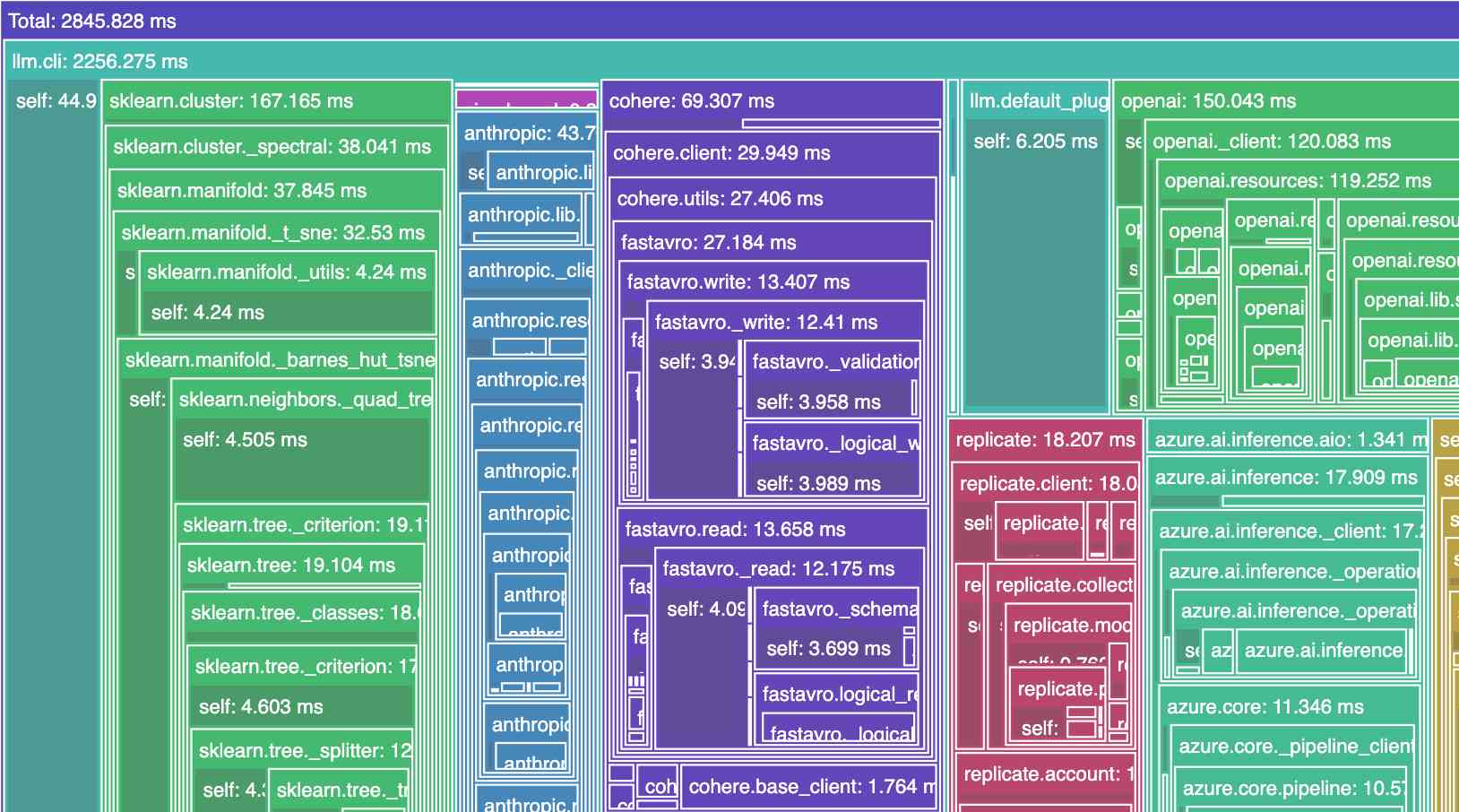python-importtime-graph. I was exploring why a Python tool was taking over a second to start running and I learned about the python -X importtime feature, documented here. Adding that option causes Python to spit out a text tree showing the time spent importing every module.
I tried that like this:
python -X importtime -m llm plugins
That's for LLM running 41 different plugins. Here's the full output from that command, which starts like this:
import time: self [us] | cumulative | imported package
import time: 77 | 77 | _io
import time: 19 | 19 | marshal
import time: 131 | 131 | posix
import time: 363 | 590 | _frozen_importlib_external
import time: 450 | 450 | time
import time: 110 | 559 | zipimport
import time: 64 | 64 | _codecs
import time: 252 | 315 | codecs
import time: 277 | 277 | encodings.aliases
Kevin Michel built this excellent tool for visualizing these traces as a treemap. It runs in a browser - visit kmichel.github.io/python-importtime-graph/ and paste in the trace to get the visualization.
Here's what I got for that LLM example trace:

As you can see, it's pretty dense! Here's the SVG version which is a lot more readable, since you can zoom in to individual sections.
Zooming in it looks like this:

Recent articles
- Useful patterns for building HTML tools - 10th December 2025
- Under the hood of Canada Spends with Brendan Samek - 9th December 2025
- Highlights from my appearance on the Data Renegades podcast with CL Kao and Dori Wilson - 26th November 2025